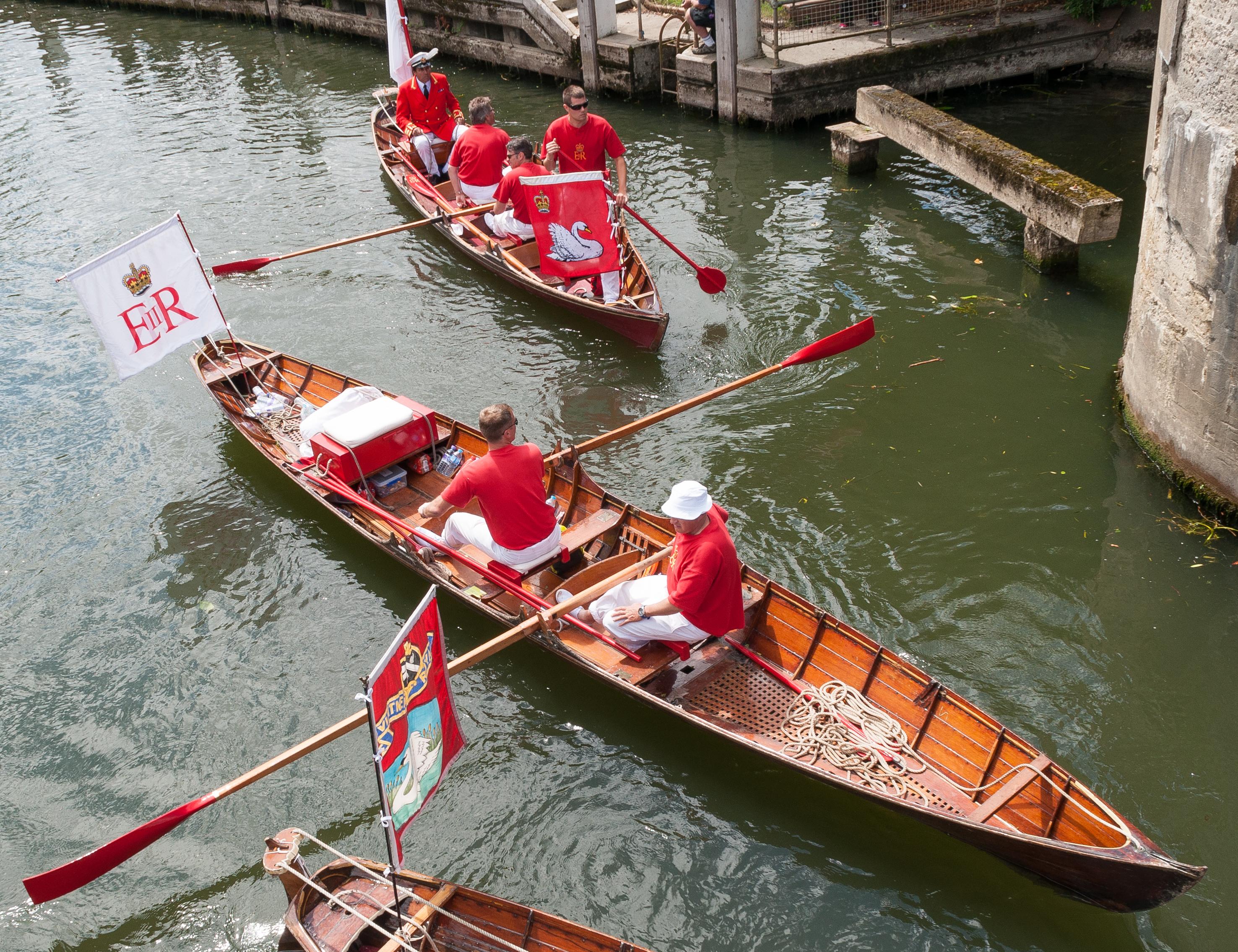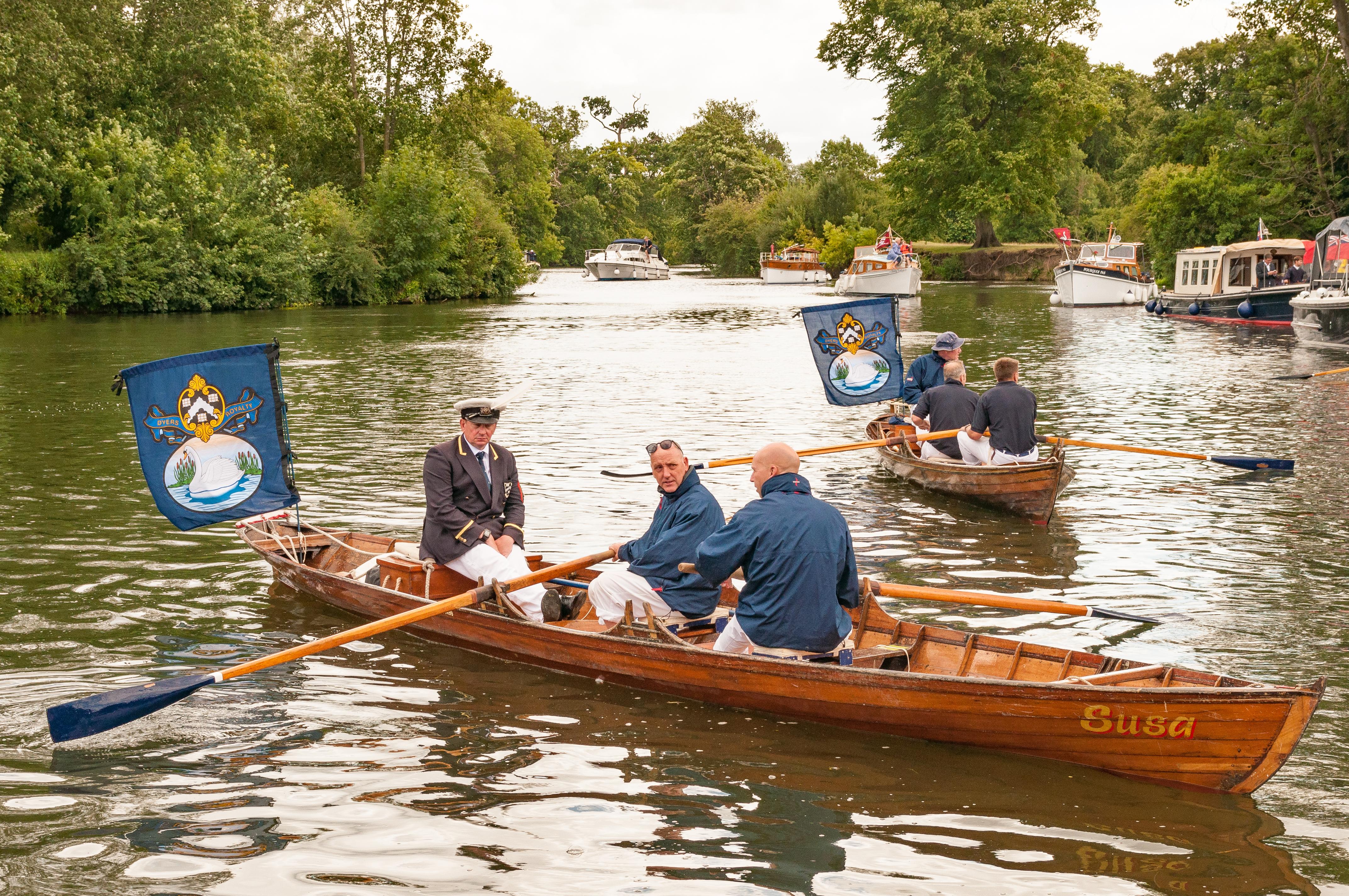Queen of the United Kingdom; Head of the Commonwealth; Defender of the Faith; Commander in Chief of the British Armed Forces; Sovereign of the Most Noble Order of the Garter; Sovereign of the Most Ancient and Most Noble Order of the Thistle; all titles held by Elizabeth II. Not included in this illustrious list is one of her lesser-used ones, the Seigneur of the Swans, a holdover from an era centuries ago when the (literally) regal avians denoted class, wealth and status. The strange and ancient relationship between the swan and the British crown manifests itself to this day in a tradition known as “Swan Upping.”
Some 40 miles west of London, the Queen’s Swan Uppers arrive at Mapledurham Lock on the River Thames. They’re traveling in traditional wooden rowing skiffs, each with three or four crewmen in smart blue or red blazers with royal insignia. Some have white swan feathers pushed into the peak of their caps. Royal pennants showing swans against blue and red backgrounds flutter from the boats.
The blue flags represent two of London’s ancient trade guilds, the Worshipful Companies of Dyers and Vintners. The guilds are some of the richest and most powerful organizations in London, and since at least the 15th century have been granted the right to own mute swans on the Thames. (Mute swans have the elegantly curved necks, orange beaks and white feathers that most people think of when they picture swans.) The red flags are for the Queen’s Swan Warden, the man charged with counting all the mute swans on the Thames between Sunbury Lock in West London and Abingdon in Oxfordshire, a 79-mile stretch of river that takes five days to navigate.
The traditional cry of: “All up!” goes up from one of the skiffs; a female swan and her cygnets (baby swans) have been spotted gliding over the water. The boats maneuver to corral the birds towards the bank where Uppers, as the crew is known, jump out and grab them, restraining the adult’s powerful legs behind her so she can be examined. The birds are counted, weighed and checked for injury and ownership marks. The Dyers and Vintners companies use rings to mark their birds, while the Crown’s swans are unmarked. Today, the practice serves as a conservation tool to track swan populations and the health of the Thames, but once upon a time it was the way in which the crown exerted its control over the swan population on the river.
Swans—who owns them, who breeds them and who eats them—is an issue for the British that has generated legal statutes, sparked courtroom battles and engaged town councils in bitter arguments since the Middle Ages.
There is a legend that the mute swan was introduced to Britain by Richard I in the 12th century, who brought them back from his campaigns during the Crusades. Today, ornithologists believe the bird is probably native to the country, with archaeological evidence for the presence of swans dating back as far back as the late glacial period, 10,000 years ago.
Since ancient times, swans have been associated with tranquility and nobility, featuring in myths and stories around the world. Their high status is likely to have come about because of their perceived beauty and natural behavior; they are solitary birds, strong and aggressively protective of their young but at the same time graceful and elegant on the water.
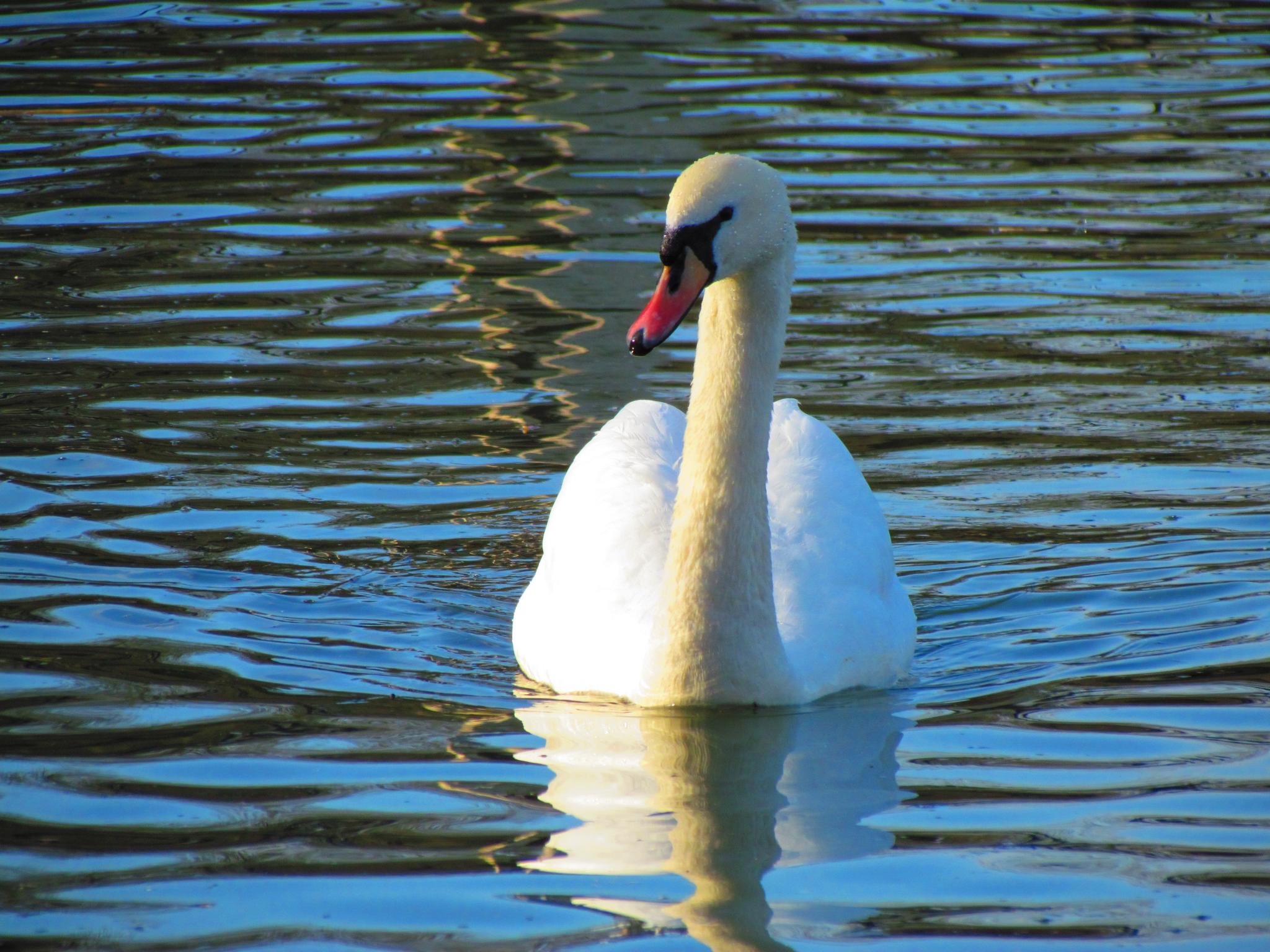
Ask a local in a British pub about swans and you might well be told that the Queen owns all the swans in the country and that only she is allowed to eat them. This popular misconception, often repeated as common knowledge in the U.K., has a kernel of historical truth that tells the story of the swan as status symbol in Medieval England.
Swans were luxury goods in Europe from at least the 12th century onward; the Medieval equivalent of flashing a Rolex or driving a Lamborghini. Owning swans signaled nobility, along with flying a hawk, running hounds or riding a battle-trained destrier. Swans were eaten as a special dish at feasts, served as a centerpiece in their skin and feathers with a lump of blazing incense in the beak. They were particularly associated with Christmas, when they would be served in large numbers at royal feasts; forty swans were ordered for Henry III’s Christmas celebrations in 1247 at Winchester, for example.
In 1496 the Secretary to the Venetian Ambassador wrote that it was “a truly beautiful thing to behold one or two thousand tame swans upon the River Thames”. A century later, during reign of Elizabeth I, German lawyer and travel writer Paul Hentzner described colonies of swans living “in great security, nobody daring to molest, much less kill, any of them, under penalty of a large fine.”
To protect swans as an exclusive commodity, in 1482 the crown ordained that only landowners of a certain income could keep the birds. Ownership of swans was recorded by a code of marks nicked into the beak of the bird; an intricate system of these ‘swan marks’ developed. Only those who owned the right to use an official swan mark could own swans, and marks were restricted and expensive to purchase. Any swans that didn’t bear a mark were automatically the property of the crown. This effectively meant that only the monarch, wealthy landowners and some large institutions like trade guilds, cathedrals and universities could afford swan ownership.
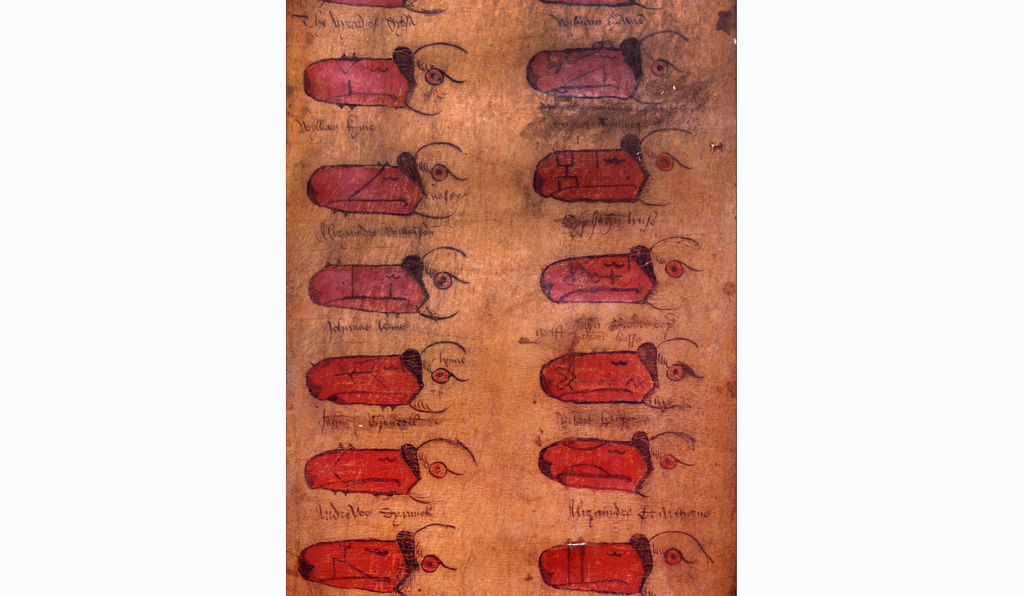
Local councils appointed swan collectors to round up wild swans to add to official flocks (the local equivalent of the royal ‘upping’) and held ‘Swanmoots’, specially convened swan courts that heard cases related to swan ownership. The penalties for ignoring or defacing swan marks were harsh. In 1570, the Order of Swannes, a legal document setting out the rules relating to the birds, recorded that “if any person do raze out, counterfeit or alter the mark of any swan [they …] shall suffer one year’s imprisonment.” There were similar tough sentences for stealing eggs or killing adult birds.
The prestige of swan ownership went far beyond their appeal as a delicacy. They were impressive enough as the centerpiece of a feast, but a swan in itself was not particularly expensive. The real desirability came from the right to own swans at all, because purchasing a swan mark was so expensive. To have a “game” of swans elegantly sculling around the lake of your stately pile required funds and status.
The rules relating to swans prevented ordinary people from interacting with them at all, beyond being able to see them on the river. If you weren’t an officially recognized swan keeper it was forbidden to sell swans, to drive them away from your land, to mark them or even to hunt with dogs or lay nets and traps on the river at certain times of year in case swans were injured.
The right to own swans was granted to the Vintners and Dyers city livery companies in the 15th century. The exact reason for the dispensation has not been recorded, but it is likely to have been a sweetener to strengthen relationships between the crown and the powerful trade guilds.
Swan remained a delicacy eaten as part of Christmas celebrations right up until the 18th century, but even after that, it was still only legal to kill and eat a swan if it had a legitimate swan mark. As such, it remained a luxury for the rich. During the Victorian period, swan fell out of fashion as a dish, and by the 20th century was rarely eaten.
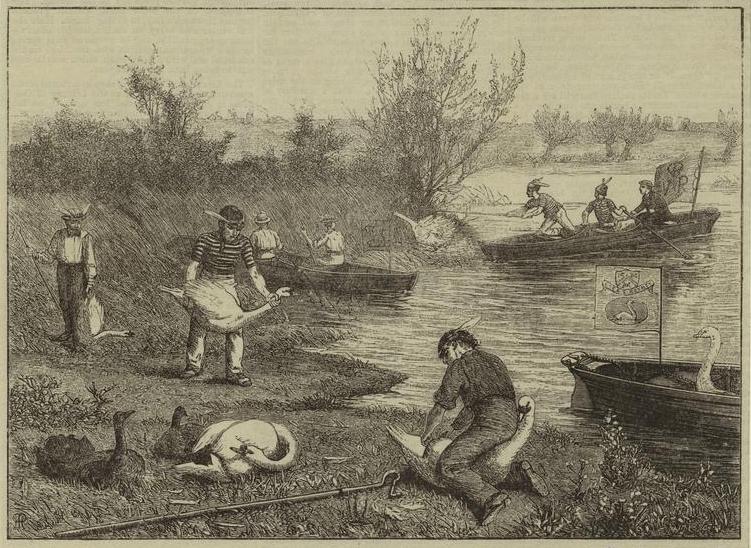
It took until 1998 for the law to change so it was no longer treasonous to eat a swan in the U.K. But as a native species, mute swans are now protected as wild birds under the 1981 Wildlife and Countryside Act and under this law it is still illegal to keep or kill them.
For several decades swans were under threat from river pollution, dog attacks and increasing populations of predators like red kite and mink. From a population on the Thames of around 1,300 in the 1960s, numbers were down to just seven pairs of birds in 1985. But conservation work such as bans on poisonous lead fishing weights and the clean up of the river Thames in recent years appears to be turning this decline around.
At Mapledurham Lock, waiting for the boats to continue their journey, the Queen’s Swan Marker David Barber says the count this year is positive. “On the first day we counted 36 cygnets, and that’s double the amount on that day last year. Swan numbers are rising, and I put that down to the work we’re doing, talking to everyone from school children to fishing clubs to educate them about looking after swans.”
Although technically all unmarked swans on open water in the U.K. still belong to the crown, the Queen only exercises her swan ownership rights on this one stretch of the Thames. Likely, the reason is because historically only the swans near London were of practical use, and monitoring them is a labor-intensive activity.
The final count on the Thames this year came in at 134, a substantial increase on last year’s figure of 72. Swans still face threats from pollution, loss of riverside habitats and predators, but the signs are looking good that the population is returning to a healthy level, and that the birds will be a feature of the Thames for many more generations to come.
